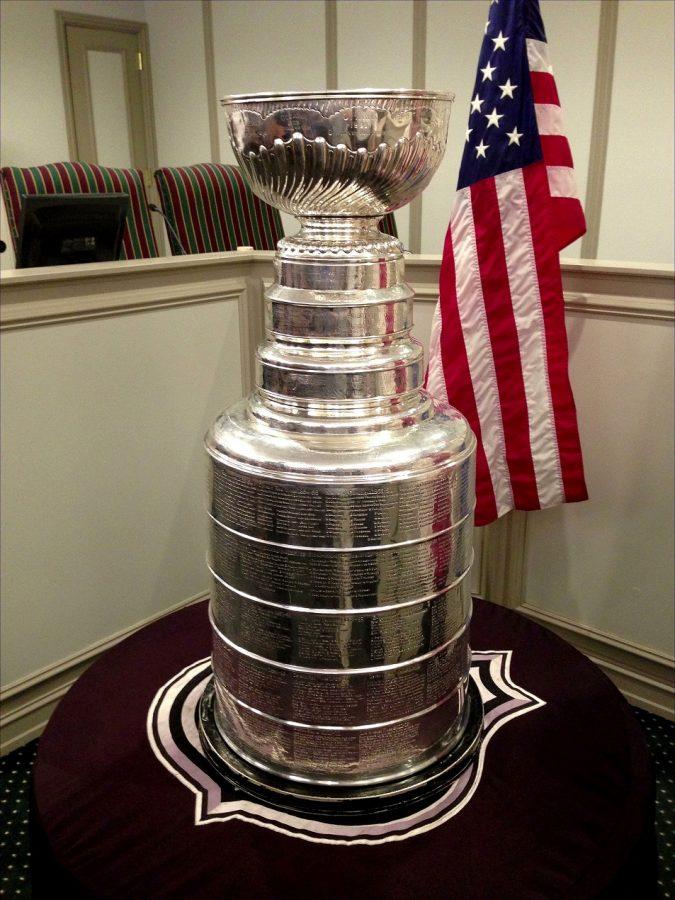When rule changes go right: NHL’s gamble on overtime changes pays off
The Pittsburgh Penguins won the Stanley Cup last week, so it’s time to review what the league got right this season
The Pittsburgh Penguins won their fourth Stanley Cup this season after defeating the San Jose Sharks in six games.
June 16, 2016
Prior to the 2005-06 season, in what I consider a stroke of genius, the National Hockey League eliminated the regular season tie game by instituting a game-ending shootout. The shootout was meant to be a last resort if the game wasn’t decided in the newly-devised, five-minute-long, four-on-four overtime period. Let’s go over a little rule change checklist here just to make sure we know where we’re at.
- Eliminate tie games: Nobody likes a tie!
- Create five minute overtime period: Exciting four on four hockey is even faster-paced and features lots of scoring chances (sounds good to me).
- Decide the game with a three-round shootout if the score remains tied after overtime. Wow! Everyone loves the penalty shot. What could be more exciting than that?
Fast forward to the present. It’s been ten years since the rule changes. I still think that the most exciting thing in all of professional sport is the hockey shootout. However, most everyone else agrees that too many games are being decided in the shootout.
I asked Fox Sports Arizona’s lead Coyotes correspondent and host of the Arizona Coyotes’ pre- and post-game show, Todd Walsh, his thoughts on the shootout during a phone interview.
“I think the premise was probably a novel thought for a while,” Walsh said. “But then in execution…I think a lot of teams and a lot of coaches especially, and goalies, felt like it had just come down to a skills competition. It was hard to award an extra point in the regular season to just that.”
Fair enough. This season, the league tried to deal with this issue by calling up an idea from the minors. It seems that the NHL had been very cleverly experimenting with ways to get more games to end before the shootout by manipulating the rules of overtime in their minor, American Hockey League.
This season, the league tried to deal with this issue by calling up an idea from the minors. It seems that the NHL had been very cleverly experimenting with ways to get more games to end before the shootout by manipulating the rules of overtime in their minor league, the American Hockey League. They found out that fewer players equal a faster pace, more strategy and more scoring. This prompted the NHL to change their overtime format to three-on-three while keeping the time of the OT period the same. Wait a minute! Did I just say three on three overtime? I think I just answered my question from ten years ago! What could be more exciting than that?
Wait a minute! Did I just say three on three overtime? I think I just answered my question from ten years ago! What could be more exciting than that?
“Very quickly this season, I think everyone saw how much more entertaining it was and how much more fair it was, because most games didn’t get into the shootout,” Walsh said. “Players really liked it. Coaches began to embrace it. I don’t think goalies liked it so much! I thought it was a smash hit. I thought it was a great idea.”
The numbers seem to bear out the effectiveness of the new rule. According to figures from www.sportingcharts.com, in 2014-15 only 45 percent of overtime games ended in overtime. After one season of the newer and more exciting system, that percentage has jumped to over 60 percent.
Once again, there doesn’t seem to be any downside to the NHL’s new overtime rules (except for the goaltenders getting pelted by frozen, rubber pucks).
“It’s one of the few times I’ve seen professional sports make a change this dramatic that is widely approved and applauded,” Walsh said.
So there is hope for organized, professional sports and the NHL stands as a shining example of what can happen when rule changes go right.


